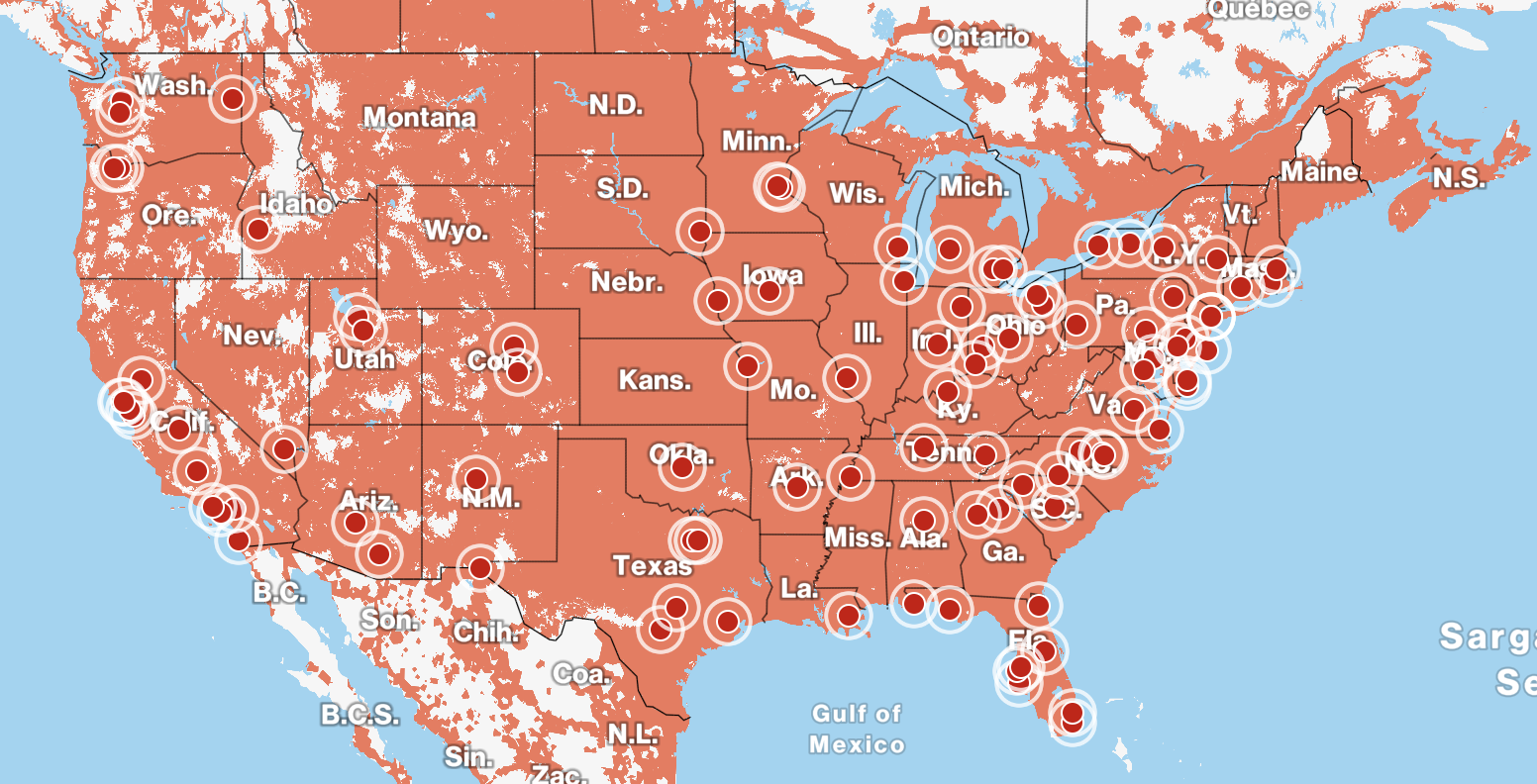
Verizon Coverage Maps
Posted by Dennis Findley on 8th Jul 2019
Everything you need to know about Verizon mobile coverage maps for the U.S.
Verizon is one of the four major cell phone data network providers in the United States. Of these carriers, Verizon is considered to have the most comprehensive cellular network coverage. That’s because their coverage map boasts up to 70% of 4G LTE cellular service across the United States.
At the time of this 2019 update, Verizon covers the greatest area with 4G LTE coverage, although AT&T and T-Mobile both beat out Verizon on their 3G coverage. While the best way to determine your carrier's coverage in your location might be to use our Find Your Nearest Cell Tower tool, Verizon is a strong bet for both rural and urban environments.
Despite the wide coverage that Verizon's cell tower network provides, users often find that a cell phone signal booster is the best way to ensure carrier data coverage inside of buildings.
How To Find Verizon Cell Towers
Use these websites to get a general idea of the Verizon coverage map in your area by looking at cell tower and antenna locations, hear reviews from other Verizon customers, and more by using these free tools.
- Good: CellReception – The cellular customer reviews here are a good way to get an idea of where there are cellular issues in an area. In our personal experience, we have been to some places that have 1-star reviews but have actually had great service in other parts of that area. That said, it’s always better to test the signal in that area yourself whenever possible.
- Better: Cell Mapper – The data on this site is great but may be challenging for a less technical cellular customer to read. The map clearly shows the exact location of cell towers near your location, the direction each faces, the bands supported, and much more.
- Best: Antenna Search – The data here is very good but the website itself can be a little bit challenging to navigate. Search by address to find all towers and antennas in a specific area and get data that clearly shows which cell company or companies operate on each cell tower.
Verizon Coverage Map for 4G & 5G
Verizon’s 4G & 5G coverage map is the strongest of all the top four mobile providers. They boast having service available to more than 326.5 million people, more than 2.56 million square miles, and over 98% of the U.S. population.

Image from https://www.verizon.com/coverage-map/
There’s no question that between Verizon’s proprietary network and its third-party providers, it by far has the widest-spread mobile 4G LTE coverage in the nation. However, like with all coverage maps, nationwide coverage density doesn’t actually matter unless you’re a frequent domestic traveler. Instead, it is more helpful for users to look at the coverage for their home and work areas and make their wireless provider decision accordingly.
Verizon 3G Coverage Map
When it comes to 3G, Verizon has less coverage than Verizon and slightly less 3G coverage than T-Mobile. However, many users predict that with the industry conversations about the advancement of 5G technology, 3G coverage will matter less and less, acting primarily as fallback coverage when 4G or 5G are not available.
Why is the Verizon Coverage Map on Their Website So Red?
You’ll notice the map on the Verizon website has a larger coverage area than that depicted in the Verizon coverage maps above. That’s because Verizon includes many of their third-party cellular providers on their map. However, unlike some of the other cellular providers, they do not break down which areas of coverage include 3rd party providers and which are proprietary. The only indication that there are third-party providers at all is in the disclaimer, where it explains that some information included is from service outside the Verizon Wireless proprietary network and that Verizon cannot vouch for its accuracy.
Understanding Verizon Wireless Coverage Maps
Two important things to remember when viewing Verizon Wireless mobile coverage maps is that many maps include third-party providers, and, more importantly, that the coverage map is purely a “best case scenario.” These maps are created based on what coverage would look like with no geographic interference (such as mountains) and no trees, buildings, weather, or other signal-impeding obstructions.
Verizon Wireless MVNOs
Verizon has several MVNOs, or mobile virtual network operators, who buy wholesale minutes and data from Verizon to resell to customers. In many cases, these MVNOs do not include Verizon’s 3rd party cellular network providers or do so on a limited roaming basis. Some examples of MVNOs powered by Verizon Wireless include Boom Mobile, Straight Talk, Eco Mobile, and more.
Extending Verizon Wireless Mobile Signal Strength
While Verizon Wireless has wide coverage across North America, many Verizon customers find that because of buildings, trees, or mountains interfering with signals, their signal may be weaker than they anticipated. In these cases, a signal booster can help improve Verizon coverage and speed.
If you have 1 or 2 bars of coverage in your home, office, or vehicle, or find that your signal is unreliable or slow, you may want to consider investing in a cell phone signal booster for solid calls, texts, and Internet usage. Explore cell signal boosters for your home, office, or for your vehicle.
How can we help?
Would you like to learn more about how to boost your Verizon Wireless coverage through a signal booster? Feel free to browse our products or contact us with any questions!
